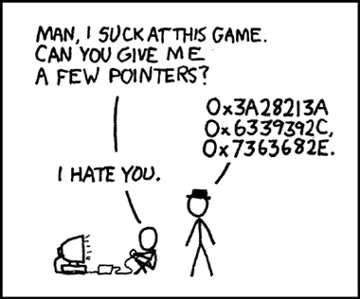Something that has always been scary (well, it’ still is) before launching Vizati is tech support.
No matter how much you tested your game, it’s bound to have bugs. Also what I’ve realized is that I don’t spend enough time testing the game, oh and you too, yes YOU (I’m assuming you’re a developer of course).

The past year I gather around a few friends who never played it to test the game for 2 days. 6 people played it the first day, 4 played it on the second day. We gathered around all complaints and issues and addressed them. After that there was more play-testing but not as aggressive. There were 3 or 4 persons testing it regularly.
The problem was always that the game was running on a more or less safe environment, there are tons and tons of different PC configurations out there. Installations problem, bad drivers, some other software running causing conflicts, all this can happen.
PC
The PC version most problematic issue was getting everything installed properly. .NET framework installation would sometimes fail and silently quit and for all purposes the game was supposed to run.
It never happened to any of our testers, but as soon as the game went out it happened.
I accidentally bumped into a thread while searching for Vizati reviews and found a client complaining that he just bought the game, It wouldn’t even start and that the developers didn’t even care.
I was shocked…what? I checked my inbox, both my personal and Different Pixel inbox. Nothing, I sent a email for myself from an external account to test it since we are running our pop server on a rented one. It worked. I decided to register an account on that forum and contact the player.
After a few email exchanges we figured out what it was and I created a thread on our own forum (dead link).
The reason he said the developers wouldn’t care is cause he wrongly assumed we wouldn’t based on past experiences with other games. This is a very problematic issue, having around a client telling that you just care about selling is bad if you are just starting. There’s not much you can do with people who don’t even try and make contact.

Xbox360
This version is perfect, there isn’t a single bug and I dare someone to point one….
lol actually the Xbox360 version never went for sale, still waiting for that XBLIG on Portugal
iOS
That’s the main issue with the iPhone port, I never gotten a single email.
I know a small percentage had some issues, it’s inevitable, but they rather place a 1 star rating and a “Don’t work” comment and move along. With all the updates some eventually place another comment like “It’s working now”. But I’m still in the dark, what is working that wasn’t before? Is it something I fix intentionally or accidentally?
Although the iPhone is a more controlled environment you can still have issues. You have 4 generations of iPhone, 4 generations of iPod Touch and iPad. Different memories, different CPU speeds. Also some have OpenGL 1 others OpenGL2. Also some run on an ARM6 others on ARM7, the processor type is transparent for the developer but if you know what you are using you can optimize floating point calculations a bunch.
I tested the game on an iPod Touch 2G, had a couple of testers playing on iPhone and half-way through I found out that game was almost unplayable on a 1st Gen iPhone. I solve that optimizing the engine.
This proves that without those external testers I would have placed the game for sell just like that without even knowing there was a problem. My iPod Touch is one of the slowest so I assumed it was ok. Don’t assume anything.
WP7
The WP7 port has this one bug that has been haunting me and I can’t reproduce it. Basically the tutorial font get’s all twisted but only when viewing the tutorial. Someone reported it to me and I wasn’t able to reproduce it on the emulator. After I got a real device I can’t make it happen, No one has given feedback about that on Vizati ratings at the WP7 Marketplace. Rita also has another WP7 device it it works great too.
A couple weeks ago I was invited to present the game at a conference, they had the game installed on one of the other speakers phone and it was working. Suddenly during the presentation to the audience it happened, I quickly skipped the tutorial and the game continued normally. So this one is still out there. Other than that I had 2 persons complaining that the game would crash after starting but a soft reset did the trick.
Mac
Around a week ago we’ve released Vizati for Mac on the App Store. This raises a bunch of more potential problems, some Macs have PPC, others Intel Processors. Also I never, ever coded anything for Mac, it’s always scary… even more since I don’t have a couple of macs laying around to test, I have to rely on remote testers.
I haven’t gotten many emails, most are suggestions or so and so far the worst bug report I got was the game not running in fullscreen, only in Window Mode, which I assume is the game wrongly calculating the screen max resolution. When toggling to fullscreen I’m querying the screen current size and using it so there may be some issues there. Must address that.
A BIG mistake I did with the Mac version was forgetting to activate the File Logger. Stupid stupid stupid. I did that to help me track where the issues may be and I totally forgot to activate it on the final build 🙁
Word of advice: When pushing a new patched version make sure you didn’t introduced a new bug.
It happens…
… a lot….
